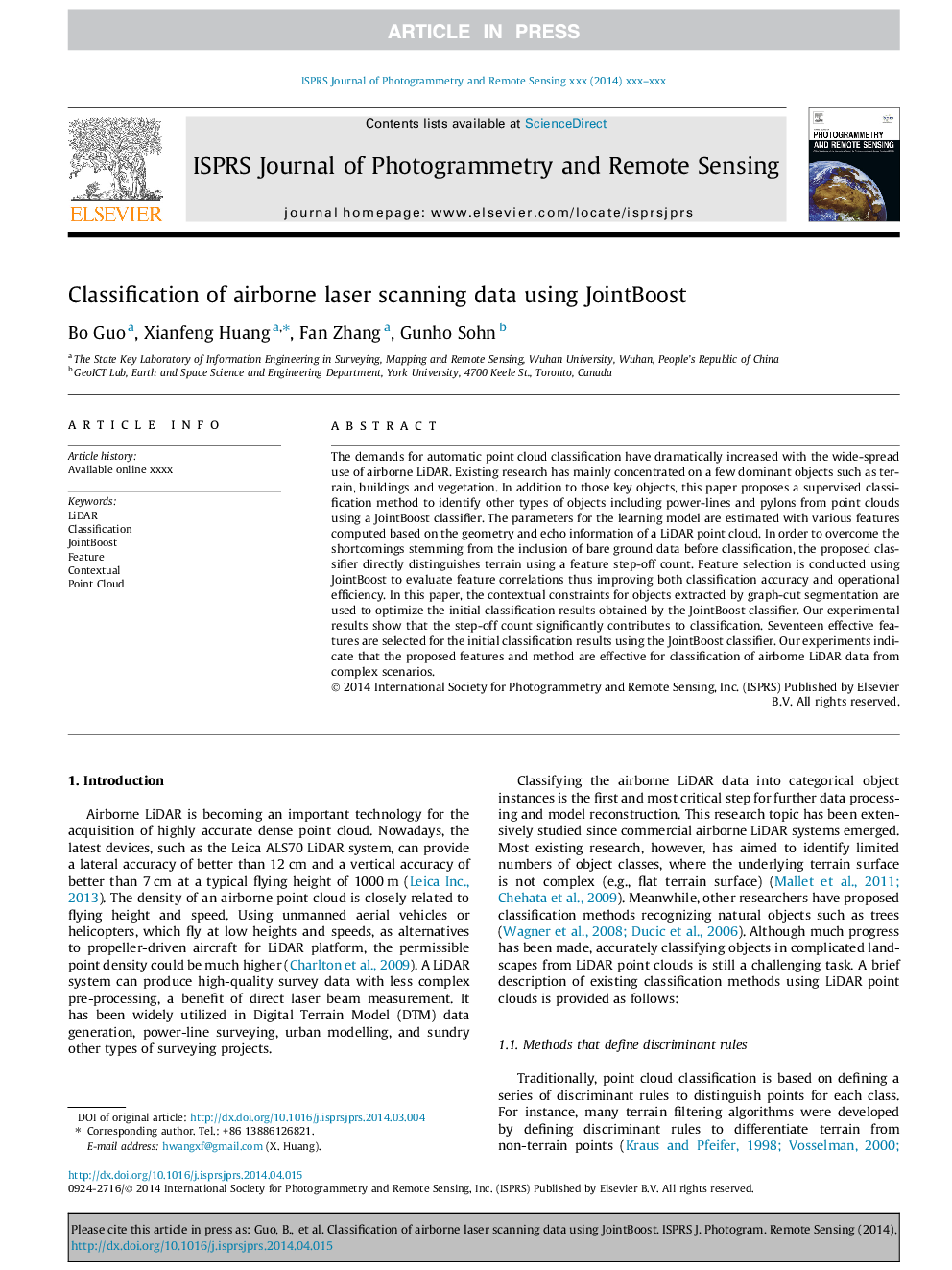| Article ID | Journal | Published Year | Pages | File Type |
|---|---|---|---|---|
| 6949533 | ISPRS Journal of Photogrammetry and Remote Sensing | 2015 | 13 Pages |
Abstract
The demands for automatic point cloud classification have dramatically increased with the wide-spread use of airborne LiDAR. Existing research has mainly concentrated on a few dominant objects such as terrain, buildings and vegetation. In addition to those key objects, this paper proposes a supervised classification method to identify other types of objects including power-lines and pylons from point clouds using a JointBoost classifier. The parameters for the learning model are estimated with various features computed based on the geometry and echo information of a LiDAR point cloud. In order to overcome the shortcomings stemming from the inclusion of bare ground data before classification, the proposed classifier directly distinguishes terrain using a feature step-off count. Feature selection is conducted using JointBoost to evaluate feature correlations thus improving both classification accuracy and operational efficiency. In this paper, the contextual constraints for objects extracted by graph-cut segmentation are used to optimize the initial classification results obtained by the JointBoost classifier. Our experimental results show that the step-off count significantly contributes to classification. Seventeen effective features are selected for the initial classification results using the JointBoost classifier. Our experiments indicate that the proposed features and method are effective for classification of airborne LiDAR data from complex scenarios.
Related Topics
Physical Sciences and Engineering
Computer Science
Information Systems
Authors
Bo Guo, Xianfeng Huang, Fan Zhang, Gunho Sohn,
